Top 10 Most Popular Newspapers in Canada
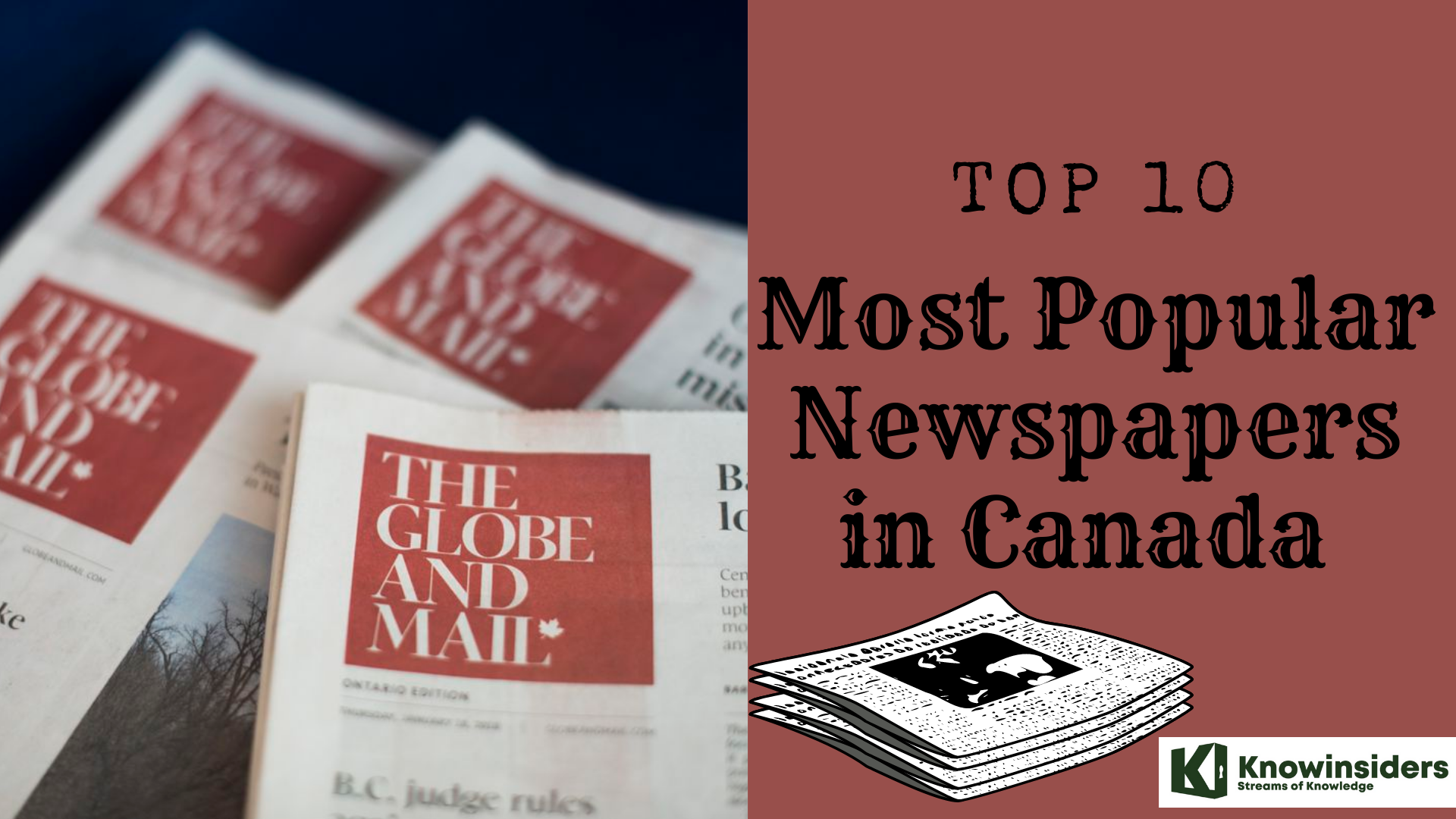 |
| Top 10 most popular newspapers in Canada |
Newspapers are the most popular form of print media in the world with millions of publications in circulation each day. The newspaper is a publication which was initially printed on newsprints with news on current events as well as many informative articles. With the advent of the internet, many newspaper publications have gone from print media to digital media.
The Canadian newspaper industry has a rich history of several newspaper companies being over a century old and has some newspapers having a circulation of over 100,000 papers every day. In 2015, the circulation of daily newspapers for both paid and free in Canada stood at 5.1 million copies per day and more than 30 million copies in a single week.
Check out these 10 most popular newspapers in Canada.
The list of top 10 most popular Canadian newspapers
10. Georgia Straight
9. Hamilton Spectator
8. Calgary Herald
7. Montreal Gazette
6. Vancouver Sun
5. Financial Post
4. Toronto Sun
3. National Post
2. The Toronto Star
1. The Globe and Mail
***
What are the most popular newspapers in Canada today?
10. Georgia Straight
 |
| Photo: Times Colonist |
Conceived as an anti-establishment alternative to Vancouver’s conservative daily newspapers, the Georgia Straight was born on the eve of the Summer of Love.
From its very first issue—dated May 5, 1967—the Straight showed itself to be a rebel with many causes, ruffling feathers and proving its mettle by tweaking the political powers-that-be. In the pages of the Straight, aldermen, mayors and premiers have always all been fair game.
Raided by the police and fined for obscenity in its early days, the Straight soon found itself banned from distribution on city streets. Willing printers became difficult to find. The paper’s founder, poet and UBC math student Dan McLeod, was even briefly jailed.
Despite the difficulties and harassment, the Straight became the first major Vancouver newspaper to give voice to the nascent environmental movement. In fact, contributors Bob Cummings, Irving Stowe and Paul Watson—who went on to found the Sea Shepherd Conservation Society—were among the founders and prominent campaigners for Greenpeace.
In the mid-1970s, McLeod hired a young Irish writer named Bob Geldof, who served as the paper’s the music editor before going on to form the musical group The Boomtown Rats, and later achieving international fame as a humanitarian.
Since those early days—which included staunch opposition to the Vietnam War, vocal support for the environment, a firm commitment to free speech and equal rights, not to mention some good old stickin’ it to the man—the Georgia Straight has both thrived and endured. As Vancouver’s pre-eminent arts, news, and entertainment source, the Straight is now even embraced by city hall, proudly winning a Mayor’s Arts Award in 2015.
Fore more than half a century, the McLeod family owned the paper as it grew from a small underground periodical to a media powerhouse with more than 800,000 unduplicated readers per issue. There’s also a digital sister publication, the high-traffic website www.straight.com, which has generated three million page views in a single month.
In 2020, the McLeod family sold the Georgia Straight to Media Central Corporation, which also owns NOW Magazine in Toronto and other media properties.
9. Hamilton Spectator
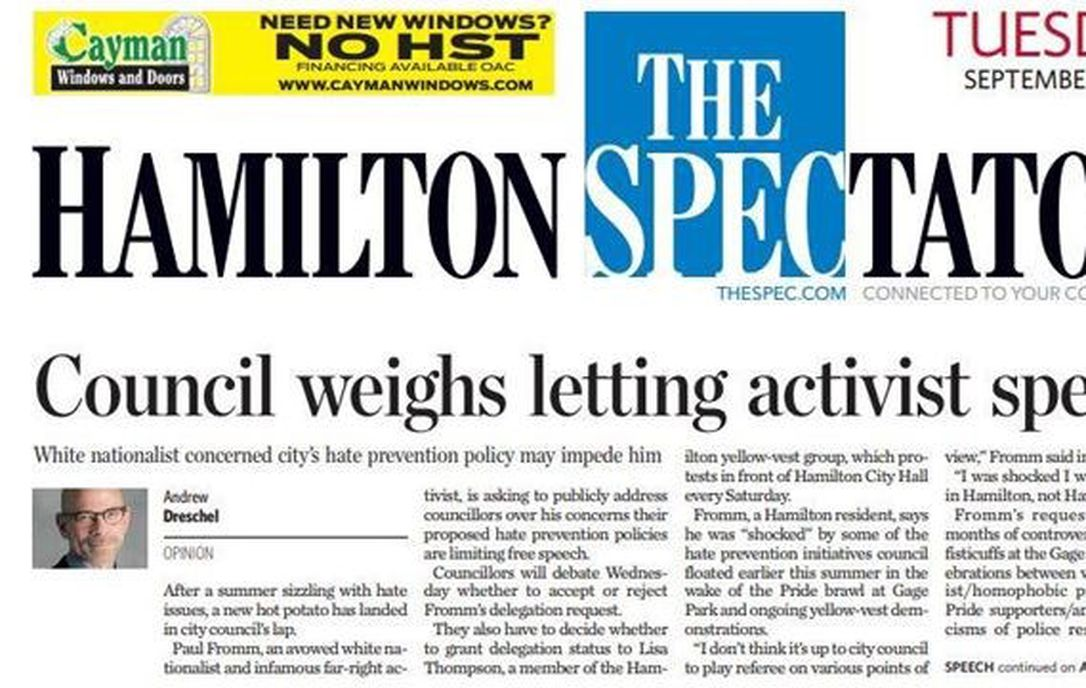 |
| Photo: www.thespec |
The Hamilton Spectator, founded in 1846, is a newspaper published weekdays and Saturdays in Hamilton, Ontario, Canada. On May 26, 2020, its parent company, Torstar, agreed to be acquired by NordStar Capital, a private investment firm. The deal was expected to close by year end.
The Hamilton Spectator was first published July 15, 1846, as The Hamilton Spectator and Journal of Commerce. Founded by Robert Smiley and a partner, the paper was sold in 1877 to William Southam, who founded the Southam newspaper chain and made the Spectator the first of the chain. The Southam chain was sold in 1998 to Conrad Black, who in turn sold off The Hamilton Spectator to Toronto-based Sun Media. In 1999, the Spectator was sold for a third time to Torstar Corporation.
The Hamilton Spectator is published six days a week by Metroland Media Group, a division of Torstar. It serves Hamilton, Burlington and the Niagara region. It also serves Brant County and Haldimand County towns such as Caledonia, Hagersville and Dunnville. The Spectator also serves Halton Region, as far east as Oakville.
8. Calgary Herald
 |
| Photo: Freebie Supply |
The Calgary Herald is a daily newspaper published in Calgary, Alberta, Canada. Publication began in 1883 as The Calgary Herald, Mining and Ranche Advocate, and General Advertiser. It is owned by the Postmedia Network.
The Calgary Herald, Mining and Ranche Advocate and General Advertiser started publication on 31 August 1883 in a tent at the junction of the Bow and Elbow by Thomas Braden, a school teacher, and his friend, Andrew Armour, a printer, and financed by "a five-hundred- dollar interest-free loan from a Toronto milliner, Miss Frances Ann Chandler." It started as a weekly paper with 150 copies of only four pages created on a handpress that arrived 11 days earlier on the first train to Calgary. A year's subscription cost $3.
When Hugh St. Quentin Cayley became editor 26 November 1884 the Herald moved out of the tent and into a shack. Cayley quickly became partner and editor.
At that time, Braden and Armour found that westerners wanted more updated information about the growing Riel Rebellion in the Northwest Territories. One year later, the Calgary Herald went daily. To meet demand, a new press was purchased that could print up to 400 papers an hour if a strong man was turning the crank. The paper was still experiencing growing pains and financial uncertainty in 1894, when J. J. Young took over the paper, saving it from near bankruptcy. During those early years, the newspaper was not so much published as improvised, with updated news provided by bulletins from passengers on the Canadian Pacific Railway.
— Diane Howard, Encyclopedia of the Great Plains, 2004
Eventually, the publisher's name was changed to Herald Publishing Company Limited and began publishing the Calgary Daily Herald, a daily version of the newspaper, on 2 July 1885.
In 1897 the editor of the Herald was impressed by the "humor and witty journalistic prose" of Bob Edwards, then one of Canada's leading journalists, with a reputation as a critic of government and society and as a "supporter of the emancipation of women and the temperance crusade," and reprinted some of his articles in the Herald.
From February 1890 to August 1893 and from December 1894 to September 1895, the weekly paper appeared as the Wednesday issue of the daily paper. Publication of the daily paper was suspended between 21 September 1893 and 13 December 1894. Publication of a daily edition began in fall 1983. Publication of the Calgary Daily Herald under the name Calgary Herald began in February 1939, as an afternoon edition until April 1985. It is now delivered in the morning.
7. Montreal Gazette
 |
| Photo: Eater Montreal |
The Montreal Gazette, formerly titled The Gazette, is the only English-language daily newspaper published in Montreal, Quebec, Canada. Three other daily English-language newspapers shuttered at various times during the second half of the 20th century. It is one of the French-speaking province's last two English-language dailies; the other is the Sherbrooke Record, which serves the anglophone community in the Eastern Townships southeast of Montreal.
Founded in 1778 by Fleury Mesplet, The Gazette is Quebec's oldest daily newspaper and Canada's oldest daily newspaper still in publication. The oldest newspaper overall is the English-language Quebec Chronicle-Telegraph, which was established in 1764 and is published weekly.
Today, The Gazette's audience is primarily Quebec's English-speaking community. The Gazette is one of the three dailies published in Montreal, the other two being French-language newspapers: Le Journal de Montréal and Le Devoir. (La Presse is only published digitally since 2018.)
In recent years, The Gazette has stepped up efforts to reach bilingual francophone professionals and adjusted its coverage accordingly. The current editor-in-chief is Lucinda Chodan. The deputy editor is Basem Boshra and the associate managing editor is Jeff Blond.
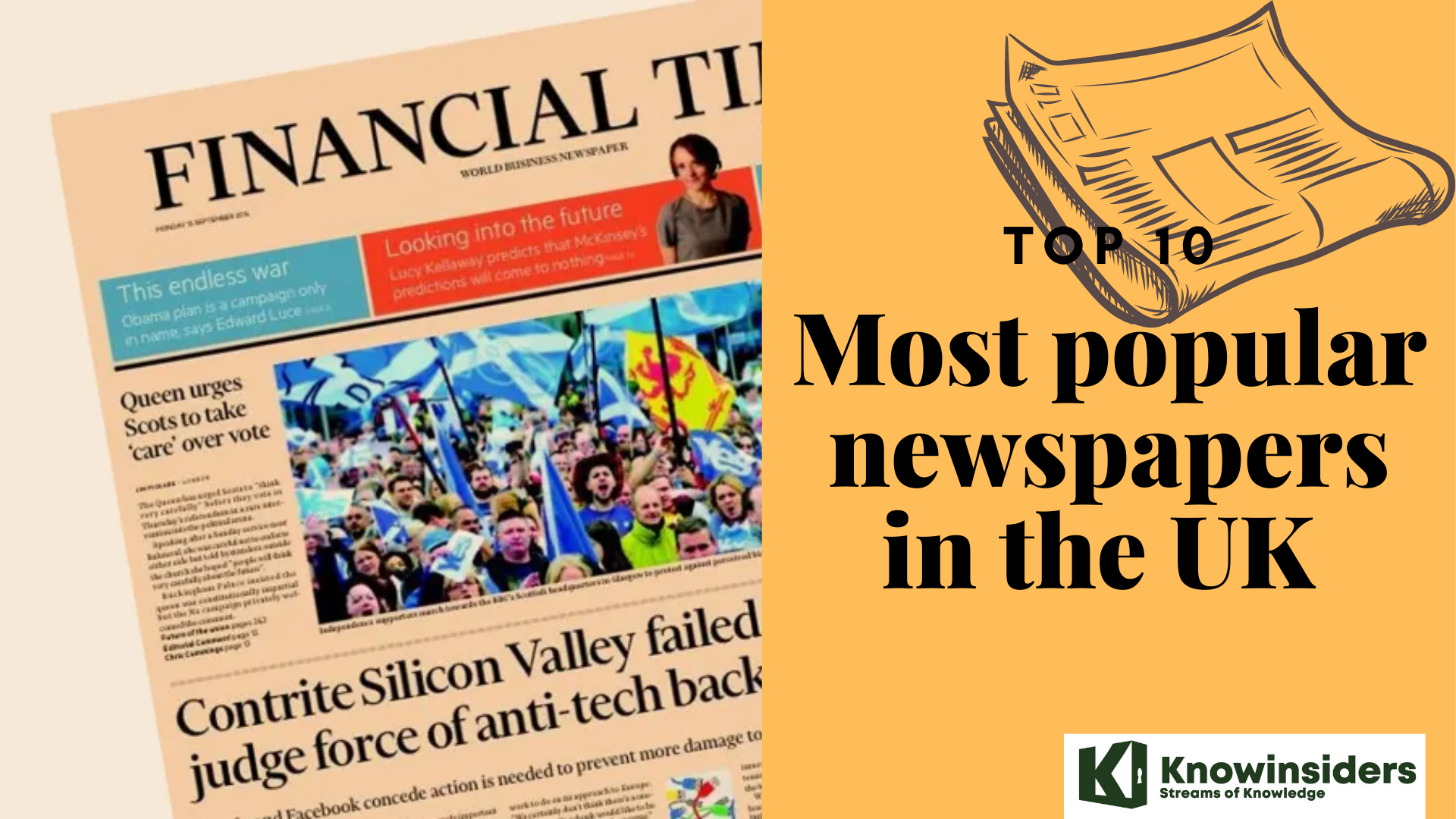 Top 10 Most Popular Newspapers in The United Kingdom Top 10 Most Popular Newspapers in The United Kingdom Keep reading the article below for top 10 most popular and most read newspapers in the United Kingdom. |
6. Vancouver Sun
 |
| Photo: Vancuver Sun newspaper |
The Vancouver Sun is a daily newspaper first published in British Columbia on 12 February 1912. The paper is currently published by the Pacific Newspaper Group, a division of Postmedia Network. It is published six days a week, Monday to Saturday.
Now combined with The Province newspaper, the Sun still has the largest newsroom of any newspaper in western Canada. The Sun is a broadsheet newspaper and was not originally related to the Sun Media chain and its tabloid Sun papers in Toronto, Ottawa, Winnipeg, Calgary, and Edmonton. However, Sun Media was acquired by Postmedia in 2015, making the Vancouver Sun and the tabloid Sun papers part of the same company.
The Vancouver Sun has seen, like most Canadian daily newspapers, a decline in circulation. Its total circulation dropped by 22 percent to 136,787 copies daily from 2009 to 2015
5. Financial Post
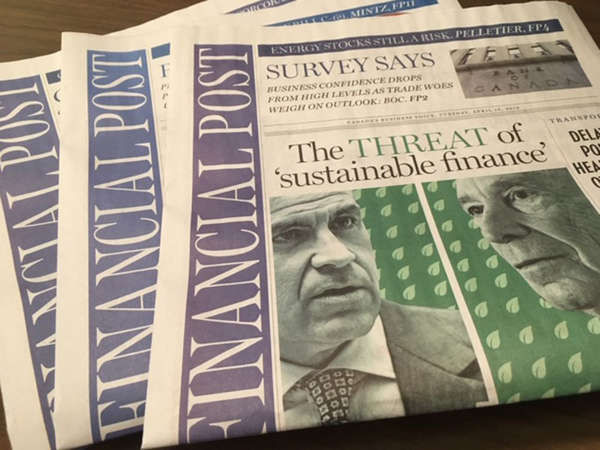 |
| Photo: Financial Post |
The Financial Post was an English Canadian business newspaper, which published from 1907 to 1998. In 1998, the publication was folded into the new National Post, although the name Financial Post has been retained as the banner for that paper's business section and also lives on in the Post’s monthly business magazine, Financial Post Business.
The Financial Post started publication in 1907 by John Bayne Maclean. It was a weekly publication, and one of the core assets of Maclean's media business, which eventually became Maclean-Hunter.
The paper was purchased by Sun Media in 1987, and expanded into a daily tabloid on February 1, 1988, and added home delivery newspaper in 1990, with a reformatted Financial Post Magazine following shortly after. In 1998, Sun Media sold the Financial Post to Hollinger, whose CEO Conrad Black had been seeking a way to establish a national newspaper. Sun Media acquired the Kitchener-Waterloo Record, the Guelph Mercury, the Hamilton Spectator and the Cambridge Reporter from Hollinger in exchange, but has since sold all four pThe Hollinger transaction was finalized in July 1998. Originally slated to launch on October 5, 1998, the National Post's launch was delayed until October 27 by the financial complications of the Financial Post purchase.
The Financial Post retains a loyal audience of English business readers in Canada, offering coverage similar to the Report on Business by The Globe and Mail. Though there has been frequent speculation that the Financial Post would be merged into the business sections of the regional newspapers owned by the National Post’s parent, Postmedia News, much of the Post’s editorial content is now syndicated to other Postmedia newspapers through the Postmedia News Service. The Financial Post publishes several popular editorial features throughout the year, including the annual competition Financial Post’s Ten Best Companies to Work For.
Editors of the paper included Floyd Chalmers, John Godfrey and Diane Francis, who was the paper's last editor prior to the launch of the National Post.apers.
4. Toronto Sun
 |
| Photo: Toronto Sun |
The Toronto Sun is an English-language tabloid newspaper published daily in Toronto, Ontario, Canada.
The Sun was first published on November 1, 1971, the Monday after the demise of the Toronto Telegram, a conservative broadsheet. As there was no publishing gap between the two papers and many of the Tely's writers and employees moved to the new paper, it is today generally considered as a direct continuation of the Telegram. The Sun is the holder of the Telegram archives.
As of the end of 2007, the Sun had a Monday through Saturday circulation of approximately 180,000 papers and Sunday circulation of 310,000.
The Sun is owned by Postmedia following the 2015 purchase of Sun Media from Quebecor. Torstar, the parent company of the Toronto Star, once attempted to purchase the Sun. The paper, which boasts the slogan "Toronto's Other Voice" (also once called "The Little Paper that Grew") acquired a television station from Craig Media in 2005, which was renamed SUN TV and later was transformed into the Sun News Network until its demise in 2015. By the mid-2000s, the word "The" was dropped from the paper's name and the newspaper adopted its current logo.
The Toronto Sun's first editor was Peter Worthington. He assumed the title "editor-in-chief" in 1976, resigned in 1982 to protest the newspaper's takeover by Maclean-Hunter but remained a columnist for the paper until his death in 2013. He was succeeded by Barbara Amiel who, in turn, was succeeded by John Downing (as editor). Other senior editors have included Lorrie Goldstein (city editor, editorial page editor), Linda Williamson (senior associate editor), Rob Granatstein (editorial page editor), and as editors-in-chief: Peter O'Sullivan, Mike Strobel, Jim Jennings, Glenn Garnett (2006–2007), Lou Clancy (2007–2009), James Wallace (2008–2013) and Wendy Metcalfe (2013-2015). The current editor-in-chief is Adrienne Batra.
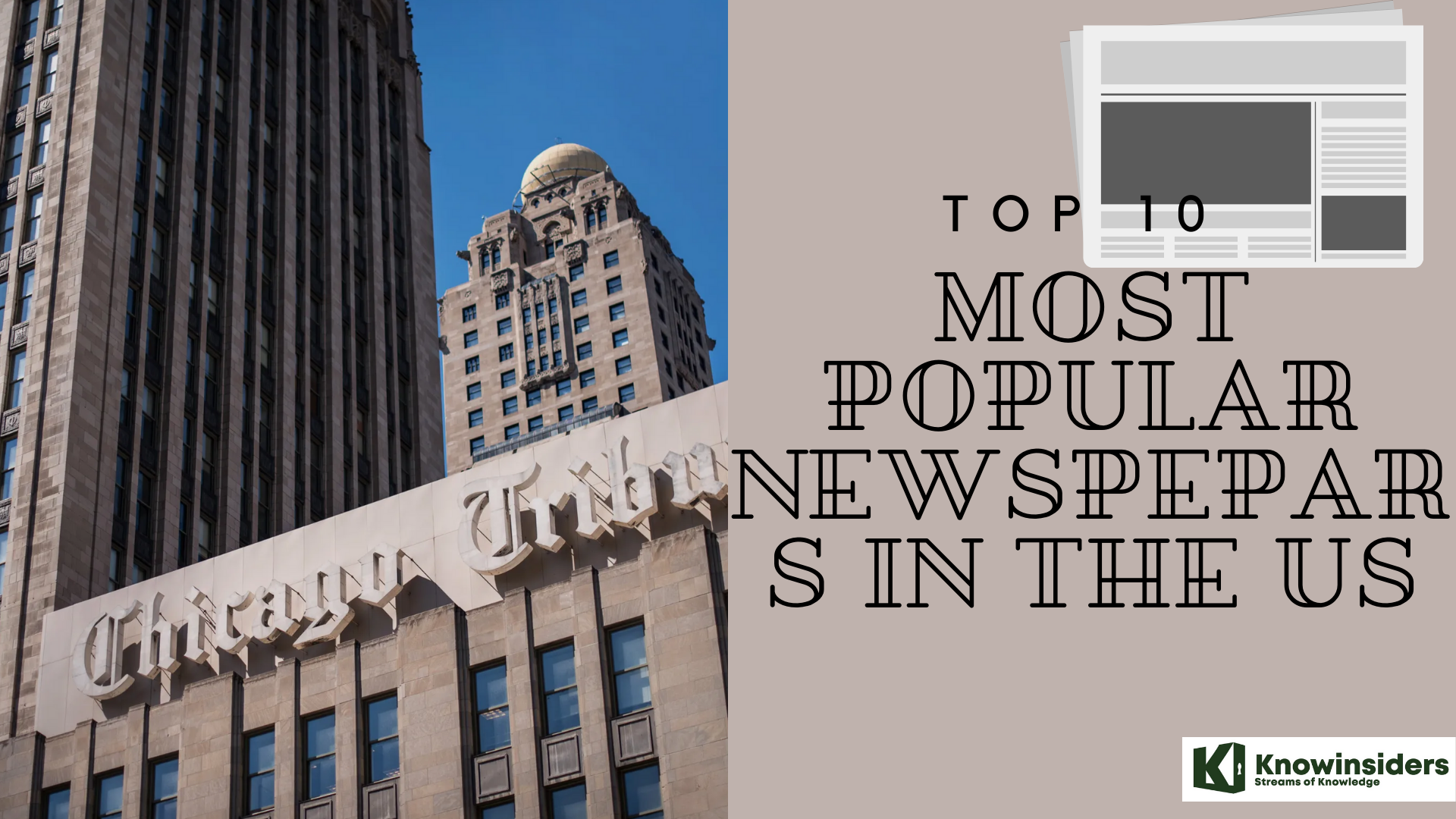 Top 10 Most Popular Newspapers In The United States Top 10 Most Popular Newspapers In The United States Newspapers play an important part in our daily life, and America has 10 of the most popular newspapers, not in the United States but also ... |
3. National Post
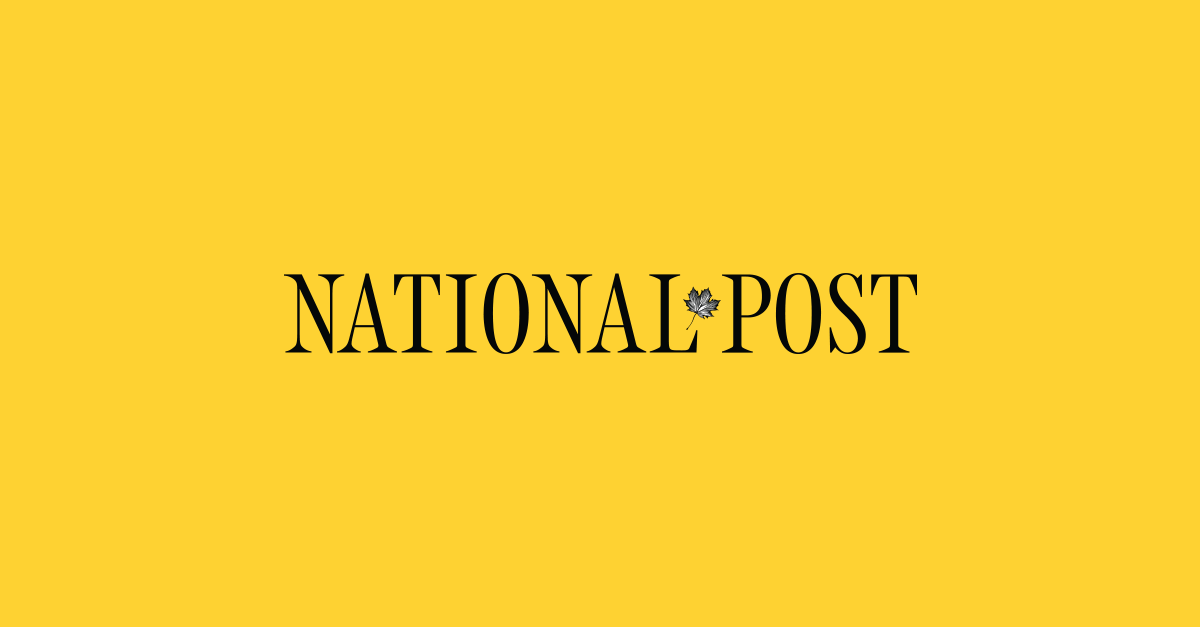 |
| Photo: The National Post |
The National Post is a Canadian English-language broadsheet daily newspaper. The paper is the flagship publication of Postmedia Network, and is published Tuesdays through Saturdays. It was founded in 1998 by Conrad Black. Once distributed nationally, it later began publishing a daily edition in the provinces of Ontario, Quebec, Alberta and British Columbia, with only its weekend edition available in Manitoba and Saskatchewan. As of 2006, the Post is no longer distributed in Canada's Atlantic provinces and the territories.
Conrad Black built the National Post around the Financial Post, a financial newspaper in Toronto which Hollinger Inc. purchased from Sun Media in 1997. Financial Post was retained as the name of the new newspaper's business section.
Outside Toronto, the Post was built on the printing and distribution infrastructure of Hollinger's national newspaper chain, formerly called Southam Newspapers, that included the newspapers Ottawa Citizen, Montreal Gazette, Edmonton Journal, Calgary Herald, and Vancouver Sun. The Post became Black's national flagship title, and Ken Whyte was appointed editor.
Beyond his political vision, Black attempted to compete directly with Kenneth Thomson's media empire led in Canada by The Globe and Mail, which Black and many others perceived as the platform of the Liberal establishment.
When the Post launched, its editorial stance was conservative. It advocated a "unite-the-right" movement to create a viable alternative to the Liberal government of Jean Chrétien, and supported the Canadian Alliance. The Post's op-ed page has included dissenting columns by ideological liberals such as Linda McQuaig, as well as conservatives including Mark Steyn and Diane Francis, and David Frum. Original members of the Post editorial board included Ezra Levant, Neil Seeman, Jonathan Kay, Conservative Member of Parliament John Williamson and the author/historian Alexander Rose.
The Post's magazine-style graphic and layout design has won awards. The original design of the Post was created by Lucie Lacava, a design consultant based in Montreal. The Post now bears the motto "World's Best-Designed Newspaper" on its front page.
2. The Toronto Star
 |
| Photo: The Toronto Star |
The Toronto Star is a Canadian broadsheet daily newspaper. As of 2015, it was Canada's highest-circulation newspaper in overall weekly circulation: although a close second to The Globe and Mail in daily circulation on weekdays, it overtakes the Globe in weekly circulation because the Globe does not publish a Sunday edition. The Toronto Star is owned by Toronto Star Newspapers Limited, a subsidiary of Torstar Corporation and part of Torstar's Daily News Brands division.
In July 2020, Torstar agreed to sell the company to NordStar Capital LP. On July 31, 2020, the Ontario Superior Court of Justice rejected an appeal against the plan.
The Star is one of the few Canadian newspapers that employs a "public editor" (ombudsman) and was the first to do so. Its newsroom policy and journalistic standards guide is also published online.
Other notable features include:
optional supplements on Saturday and Sunday include Starweek (television listings and episode summaries), abridged version of The New York Times international section, New York Times Crosswords, editorials, and book reviews). Starweek and The New York Times supplements require separate additional payment)
The Star states that it favours an inclusive, "big tent" approach, not wishing to attract one group of readers at the expense of others. It publishes special sections for Chinese New Year and Gay Pride Week, along with regular features on real estate (including condominiums), individual neighbourhoods (and street name etymologies), shopping, cooking, dining, alcoholic beverages (right down to having an exclusive on the anti-competitive practices of the Beer Store that led to major reforms on the sale of alcohol in Ontario grocery stores in 2015 by Premier Kathleen Wynne and Ed Clark), automobiles (as Wheels), and travel destinations.
The advent of the National Post in 1998 shook up the Toronto newspaper market. In the upheaval that followed, editorial spending increased and there was much turnover of editors and publishers.
1. The Globe and Mail
 |
| Photo: The Globe and Mail |
The Globe and Mail, Toronto, was founded in 1936 when George McCullagh united two influential and historically important dailies, The Globe and The Mail and Empire. From the beginning, the new newspaper took on the character of the old Globe.
The Globe and Mail, Toronto, was founded in 1936 when George McCullagh united two influential and historically important dailies, The Globe and The Mail and Empire. From the beginning, the new newspaper took on the character of the old Globe. George Brown launched the Globe in 1844 with the support of a group of Reform Liberals. Although at first a party journal, the Globe quickly became required reading for the educated and business community in Toronto and the surrounding countryside through a shrewd mixture of news, features, forceful editorials and technological innovation.
By 1853 the four-page paper had become a daily with a weekly edition for out-of-town subscribers; in 1876 Brown commissioned early-morning trains to Hamilton and later London, and absorbed mailing costs for the daily Globe.
As new presses and cheap paper enabled the journal to expand in size, the first women's section was added in 1882 and, within a decade, drawings and photoengravings. By 1900 the Globe was established as a quality paper attractive to advertisers, and with a combined circulation for all editions of 69 545. Just after the turn of the century, it added the words "Canada's National Newspaper" to its masthead and began its pursuit of readers in all parts of the country. Meanwhile, The Mail had been established as a Conservative party organ in 1872, and in 1895 it absorbed another Tory paper, The Empire. In 1900 The Mail and Empire boasted a circulation of 61 720.
McCullagh purchased The Globe and The Mail and Empire within weeks of each other before merging them. As an independent publication, The Globe and Mail became the flagship of FP Publications' chain of newspapers in 1965 with a strong emphasis placed on the Report on Business section. In 1980 it was bought by Thomson Corp. It has become a journal of record as well as of the business, political and cultural communities. As a "writer's newspaper,"The Globe and Mail has given skilled journalists such as Jeffrey Simpson and Michael Valpy the opportunity to practise their craft.
An average readership of one million on any given day (the Globe does not publish on Sunday) puts the newspaper among the country's most popular dailies. The national edition (there is a separate one for the Metro Toronto area), with Report on Business, is beamed by satellite six days a week to printing facilities across the country. The Globe also publishes the Report on Business magazine once a month.
Staff reporters are based in several Canadian cities and foreign bureaus are located in London, Moscow, Beijing, Rome, Jerusalem, Johannesburg, New Delhi, New York and Washington.
In 2001, a decision by the Competition Bureau cleared the way for Bell Canada Enterprises Inc to take a majority ownership position in the Globe, making it part of its Bell Globemedia division which also includes the CTV network and various internet ventures (see Media Convergence). In 2005, Bell Canada Enterprises Inc reduced its stake in Bell Globemedia to 20 per cent.
 Top 10 Countries With Most Romantic Men In The World Top 10 Countries With Most Romantic Men In The World What is the best place to look for your ideal man? These 20 countries have the most romantic men in the world. Check it out! |
 Top 10 Most Romantic Places To Stay In The World Top 10 Most Romantic Places To Stay In The World Where to take your partner to have a wonderful holiday? These 10 places will be a recommendation for you. |
 Top 10 Most Dangerous Cities In The United States Top 10 Most Dangerous Cities In The United States Violent crime—especially gun violence—is nabbing headlines around the U.S, particularly in the country’s biggest cities. But which major metros report the highest numbers of crimes ... |
 Top 10 Most Neighborly Cities in America Today Top 10 Most Neighborly Cities in America Today From Florida to Hawaii, these cities take care of each other. Check out the top 10 most neighborly cities in America today! |


























